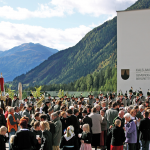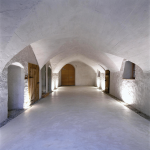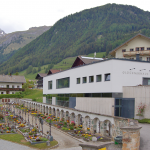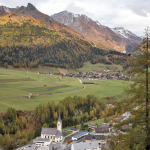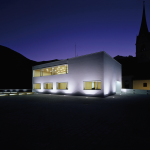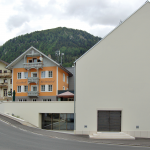Kals am Großglockner, Tyrol, Austria
The municipality Kals am Großglockner has 1,209 inhabitants and is located in a secluded valley very close to Austria’s highest mountain – the Großglockner. It consists of 11 villages and is located about 30 km from the city Lienz. Kals is located in the Hohe Tauern alpine landscape: about 40 percent of the area are alpine and unusable, 35 percent are alpine pastures and 20 percent are forests.
The economic development of the municipality was inhibited until the 1980s by several factors: After 1945, heavy rain and numerous avalanches lead to severe destruction. By the 1950s, plans were made to create a catchment lake for energy production. These plans lead to severe contentions and were an impediment for investments. Only in 1987 the population of Kals sank the project. Today, the population considers the stagnation a chance: Since no infrastructures were created for mass tourism, the only option is soft tourism. First impulses for sustainability were given by the foundation of the national park Hohe Tauern in 1981. Kals defines itself as “partner of nature” – which is considered in all of its projects.
Since 1992, the municipality has managed to revive the empty village center by renovating old and creating new buildings in a timely form, while taking into account the remaining buildings. Additionally, it created a highly functional village core. Aside from the Town Hall, the village square and the gothic presbytery, the culture house is a high light. In 2008, the municipality was honored as an Austrian Building Culture Municipality due to the high architectural quality of the new public buildings and spaces.
The landscape is diverse and attractive; the ecological balance of the landscape is completely intact. About 75 percent of the farmers are still active in alpine farming. Regional products are refined and sold in local stores and gastronomy. An important factor is the agricultural community, which is also responsible for forestry. For the last couple of years, the community focused in the sale of wood chips. The municipality uses heat from two local wood chip energy plants, electricity is produced in small hydroelectric power plants.
The community life is characterized by copious associations, which have a great infrastructure at their disposal. Culture is of great value for the community – the “Pavillion” offers an outstanding event location that has become a focal point for local as well as regional art and culture. Communication, information and education are of great importance. The co-creation and co-responsibility of all population groups is accelerated by exemplary involvement processes.
Kals am Großglockner is a municipality with a highly attractive and diverse nature and cultural landscape, which features a locally typical building culture. The population has a high sensibility for its identity, its construction monuments and its environment. Its clear analyses and guidelines result in development processes, which are important to be able to cope with the challenges of the present and future. Kals relies heavily on a processual development as well as the aid from various experts and the commitment of the municipality’s population. The success is visible and noticeable.
Evaluated: 2014

